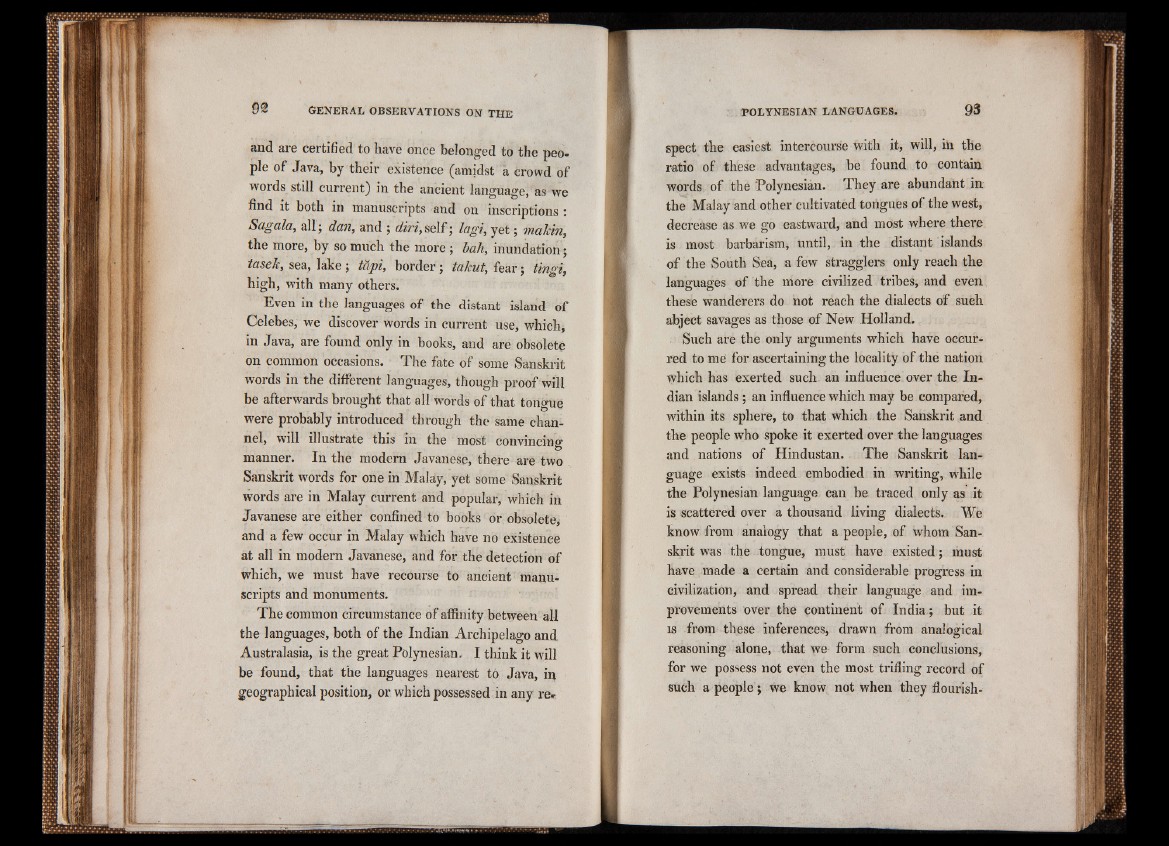
and are certified to have once belonged to the people
of Java, by their existence (amidst a Crowd of
words still current) in the ancient language, as we
find it both in manuscripts and on inscriptions :
Scigala, all; dan, and ; divi, self; lagi, yet; makin,
the more, by so much the more; bah, inundation;
tasek, sea, lake; tapi, border j takut, fear: tingi,
high, with many others.
Even in the languages of the distant island of
Celebes, we discover words in current use, which,
in Java, are found only in books, and are obsolete
on common occasions. The fate of some Sanskrit
words in the different languages, though proof will
be afterwards brought that all words of that tongue
were probably introduced through the same channel,
will illustrate this in the most convincingo- manner. In the modern Javanese, there are two
Sanskrit words for one in Malay, yet some Sanskrit
words are in Malay current and popular, which in
Javanese are either confined to books or obsolete*
and a few occur in Malay which have no existence
at all in modern Javanese, and for the detection of
which, we must have recourse to ancient manuscripts
and monuments.
The common circumstance of affinity between all
the languages, both of the Indian Archipelago and
Australasia, is the great Polynesian. I think it will
be found, that the languages nearest to Java, in
geographical position, or which possessed in any re*
spect the easiest intercourse with it, will, in the
ratio of these advantages, be found to contain
words of the Polynesian. They are abundant in
the Malay and other cultivated tongues of the west,
decrease as we go eastward, and most where there
is most barbarism, until, in the distant islands
of the South Sea, a few stragglers only reach the
languages of the more civilized tribes, and even
these wanderers do not reach the dialects of such
abject savages as those of New Holland.
, Such are the only arguments which have occurred
to me for ascertaining the locality of the nation
which has exerted such an influence over the Indian
islands ; an influence which may be compared,
within its sphere, to that which the Sanskrit and
the people who spoke it exerted over the languages
and nations of Hindustan. The Sanskrit language
exists indeed embodied in writing, while
the Polynesian language can be traced only as it
is scattered over a thousand living dialects. We
know from analogy that a people, of whom Sanskrit
was the tongue, must have existed; must
have made a certain and considerable progress in
civilization, and spread their language and improvements
over the continent of India; but it
xs from these inferences, drawn from analogical
reasoning alone, that we form such conclusions,
for we possess not even the most trifling record of
such a people; we know not when they flourish